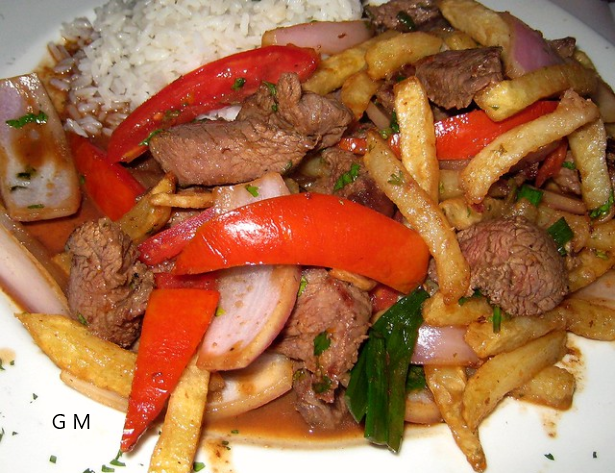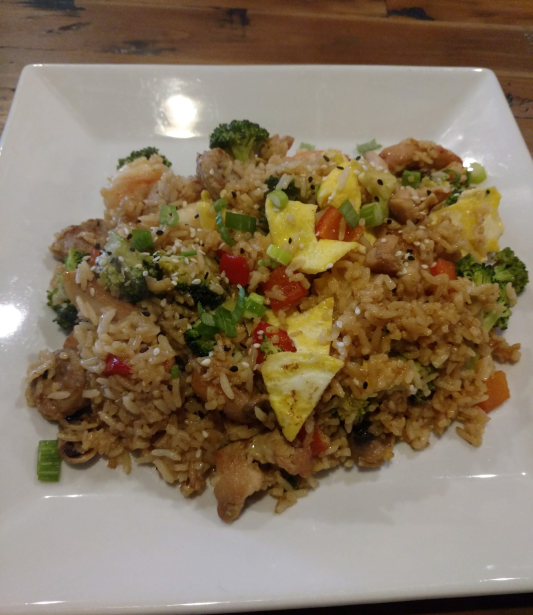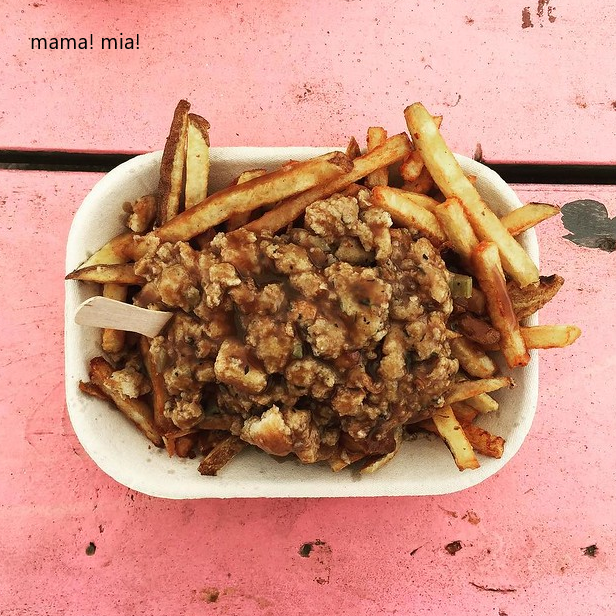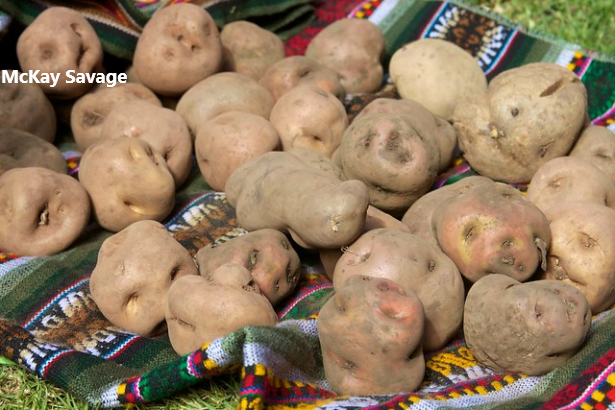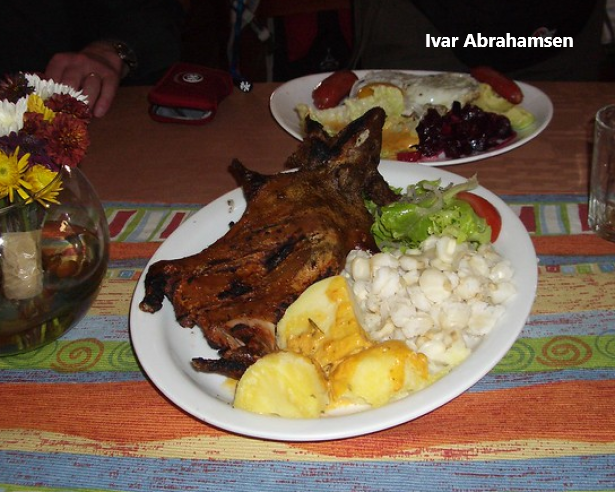Looking in Abroad's Pantries - Peru

Why hello there! And welcome back to the segment who’s name is just over the line of good taste, but features a pun so enjoyable to me that I refuse to change it. As John Mulaney said of a joke “That line never gets a laugh, but once you write it, it stays in the show forever.” So I guess I’m saying I’m basically the same person as John Mulaney.
Anywhozzle, This is “Looking in Abroad’s Pantries”, where we unpack some of the basic details of a specific nation’s cuisine for you, my mostly American audience. Though, generally speaking, the points are of value to anyone NOT of the given nation, so please don’t feel left out, all of my non-Peruvian readers. Peruvians, you CAN feel left out, but you get the side benefit at laughing at a white guy trying to summarize hundreds of years of Andean culture, the effects of various waves of immigration, and the complexity of a cuisine cooked by thousands in a short enough time that his teacher friends don’t tab away while reading it during their lunch break, so…squarsies?
Seems excessive, but I understand their anger.
So let’s try and talk about Peruvian food! What is it, where can you find it, and how much does it cost?
A Pocket Full of Sunshine
Let’s start with the last two questions, because they were meaningless jokes, and are easy to get out of the way: You can find Peruvian food primarily in Peru, dumb dumb. Otherwise…how the hell am I supposed to know? Google exists, look up “Peruvian food near me”. Or you can be driving through a neighboring town, see a restaurant in a strip mall named “Taste of Peru”, and skip the digital assistance for blind luck.
Emapa-nada problema, amigo.
The last question is, again, completely up for grabs. I think it’s fairly inexpensive, but who knows. Hell, I don’t even know what Peru’s CURRENCY is, so I couldn’t tell you how much it costs IN PERU. (That sentence is a lie. It WASN’T a lie 6 minutes ago, but I am mentally incapable of writing a sentence like “I don’t even know what that country’s currency is” without immediately looking it up. Peru’s currency is the “Sol”, which is Spanish for Sun, and now I’ve got a name for this section of the post, yay. And it’s valued at about 0.30 USD. (that’s 30 cents in American money, if you’re not up on your international trade acronyms.) )
But WHAT is Peruvian cuisine? Ah, now that is a much more interesting question. Because my first answer has to be: “Fuckin’ Wild, yo”.
The Wild Wild West (Of the South. No, Further South.)
Peru sits at an amazingly complex intersection of so many different foods and traditions that it kind of boggles my mind. For instance, one of the SIGNATURE dishes of Peru, the classic, the food every Peruvian knows and talks about, is Lomo Saltado, which means “Jumped Beef” in Spanish (well, Jumped Loin, as our Lomo al Trapo post would point out, but jumping someone’s loins means something very different in English than Spanish), and refers to a Beef and French-Fry Stir-Fry. And before you ask, No, Peru did NOT invent the concept of Stir-frying independently of Chinese cuisine.
Nor did they invent the French fry, which, as we’ve covered before, were invented in Belgium.
No, Lomo saltado is a prime example of chifa cuisine, referring to a cuisine that arose from numerous Cantonese immigrants to Peru back in the 19th century. Chifa comes from the Cantonese “chi fan”, meaning “to eat rice”, and one of the prime dishes of it OTHER than lomo saltado is chaufa, or Fried Rice.
Which is what I ordered at Taste of Peru. The Empanadas were just an appetizer.
And that’s…jarring, to someone like me. I’ve spoken before about the experience, but Peru is a masterclass in what I think of the “foreign fusion confusion” paradigm: the shocking realization that, yes, just as your country had to relate to immigrants, cuisines, and other cultural components from other nations, so too did OTHER NATIONS. Discovering that there is a robust market in South America for Fried Rice and Wonton Soup is the kind of thing that just kind of hits your psyche in a strange way. Like learning that European McDonald’s have Curry Sauce as a Chicken Nugget dipping option, or, for a more international take, the sheer amount of minds that get blown when different countries learn how other nations eat French Fries.
In Newfoundland, they serve ‘chips’ with Stuffing and Gravy, for instance. Yes, they top their fries with Stove-Top style stuffing, and gravy. It sounds amazing, and I plan to make it this November.
But yes, Peru has a big Asian community, and that has a distinct effect on its cuisine: in addition to chifa food there is also Nikkei food, from Peru’s Japanese immigrants. Depending on who you ask, it might be from these very people that the modern idea of ceviche arose: some Nikkei chefs have argued that the original recipes for ceviche were more like escabeche, with the fish heavily cooked, and it was the Japanese approach to sushi that moved to a gentler method.
But these cuisines could not have flourished if not for the core ingredients of Peru.
The Star-ch Performers
When it comes to discussing the core ingredients of Peruvian cuisine, I think we really see part of my confusion with how the cuisine “works”, because it’s actually remarkably recognizable: Because Peru is right next to the heart of the Andes mountain range the original source for Potatoes. Indeed, testing indicates that the very first potatoes grew right between Peru and Bolivia.
I was looking for a more dramatic shot of Peruvian potatoes (there’s over 3000 varieties), but the good pics were all copywritten, and also a friend needs help so I didn’t have time.)
And Peru has a fascinating position: it’s still in the tropics, but it’s not RIGHT on the tropics, and it’s situated between the Andes to the East, and the Pacific to the west, which made it a great agricultural zone, particularly for growing corn. Later, as cattle became a prime resource in South America, it received bleed-over from the beef trades of Argentina, Brazil, and Chile, as well as starting its own cattle ranches. So the core products for a lot of Peruvian dishes are potatoes, corn, and beef…which is so fundamentally American that it really drives home the argument “The United States isn’t the only America in the world”. It’s like learning that Iceland leads the world in per capita pizza consumption, you just go “wait, I thought that was our thing!”
That sign reads “All you can eat for 99 Kroner”. Which, to continue my economic translations, is about $11.10 US. Which is a very reasonable price for all you can eat pizza. Ignore the broken glass. There was a riot.
Which is not to say the cuisine is COMPLETELY identical to what you’d find in Montana or Iowa. The differences come in a variety of ways: for instance, the numerous chiles of Peru, including the several varieties of ají. A traditional Peruvian dish of Papas de huancaina is basically just a Peruvian version of scalloped potatoes with pepper paste mixed in. Or nachos with boiled potato slices instead of tortilla chips.
WE also have the offal truth: many Peruvian dishes use ingredients that we in the United States are more leery of. Since beef was prohibitively expensive for much of Peru’s history, many of their beef dishes rely on less-desired cuts, such as beef hearts or tripe. They also have a long tradition of cooking and eating cuy, a local meat source many in the United States would flinch to hear called such…since we call it a “guinea pig”, and they showed up on our shores as adorable potential pets, rather than potential lunchmeats.
Apparently it tastes like Dark-Meat Chicken, or Rabbit.
And looks like a little crucified rabbit.
Peru is also one of the first places to harvest quinoa, because at a certain point it starts to feel like EVERYTHING comes from Peru. Seriously, I have not touched on the fact that Lima beans are named for Lima, the capital of Peru, since they’re from the area, and also TOMATOES WERE FIRST FOUND HERE. Basically every goddamn “New World Crop” could have called “A Peruvian export”, except for Turkeys. Those were Mexican.
But the core of Peruvian cuisine is fairly straightforward: Rice, Corn, Potatoes, Peppers. Almost every dish you could find in Peru has at least one of them, and more than likely two. If you need a picture of Peruvian food, think of tamales next to French fries, or sauced meat next to rice. Think of Tex-Mex dishes with more yellows than reds. And think of Empanadas, Fried Rice, and Salchipapas, which are such an aggressive American dish, the knowledge that we didn’t invent it is staggering. Salchipapa is a portmanteau in Spanish, meaning it slammed together two words to make a new one. Specifically salchicha and papas, or “sausage” and “potatoes”. Because this is a dish of sausages and potatoes. Specifically, beef sausages and French fries. MORE specifically, HOT DOGS and French Fries. PERU INVENTED HOT-DOG FRIES.
The Coke in the background only adds insult to the injury.
Also, there’s normally sauces on the mix, so it’s not quite as simple as it looks here.
Those sauces are typically just Ketchup, Mustard, and some Ají sauce, but it’s SOMETHING.
I don’t even know why The United States tries anymore. It’s clear we’re no longer truly American. Peru’s taken that job over. Pack it in. They’ve got this. Except with soda, I guess. Inka Cola, the “national beverage” of Peru, (a lemon verbena flavored soda) is one of only TWO ‘national beverages’ that outsells Coca-Cola in its home nation. (The other is Irn Bru in Scotland.) So their only failing as True Americans is that they prefer their national soda to Coca Cola. Which…I don’t even know if that’s a real loss.
My understanding of my nation has been rocked to the core, and I need to take a nap. Almost none of this was even VAGUELY related to Shakespeare! I need a drink. Maybe a pie. We’ll see. I’ll talk to you Monday.
MONDAY: JON EITHER MAKES A DRINK, OR A PIE. IF THE DRINK, IT’LL BE COLORFUL AND MAYBE VERY VERY WEIRD. IF THE PIE, IT’LL BE MEATY, MUSHY, AND VERY VERY DARK.
THURSDAY: JOIN US ON MONDAY, AS I DISCOVER WHAT I’LL DO THURSDAY.



